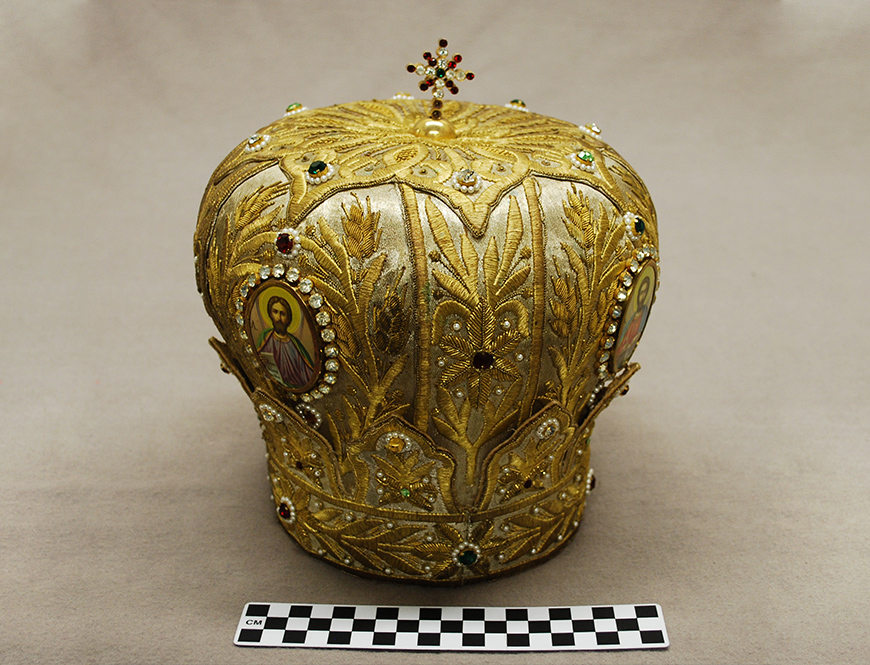This object is a Greek Bishop’s miter, or ceremonial headpiece. It’s an elaborate headdress made from brocade, with elaborate embroidery and embellishments, and depicting Christian symbols and figures. It belonged to Bishop John of Amorion, who was the first American-born bishop of the Greek Orthodox Church. He was ordained in 1971 at the Annunciation Cathedral in Houston, Texas.
The Greek immigration story into Texas is a colorful and adventurous one. The first recorded Greek immigrant, known only as Captain Nicholas, entered Galveston Island with the well-known pirate, Jean Lafitte in 1817. He married a woman from the Karankawa tribe, but lost her in a storm. He then sailed with Lafitte around the Yucatan Peninsula in Mexico, before finally returning to Galveston in 1842.
By 1860, Captain Nicholas was one of only two Greeks registered in Texas. He lived out his life selling fish and oysters, and transporting charcoal from the mainland to the island until his death in the Galveston storm of 1900. He was nearly 100 years old when he died.
Many Greeks emigrated out of Greece to escape political, social, and economic problems. Despite gaining independence after almost 400 years of Turkish rule, many people were still feeling oppressed, and by 1910, almost 10% of Greeks had emigrated out of their homeland.
Greek immigrants to Texas didn’t come as families, but rather as single men, looking for opportunities in the cities. The first Greek colony in Texas was in Galveston, where 37 Greeks worked in saloons, markets, and cotton gins. They saw opportunities to move up the economic ladder, working entry level jobs while learning English, saving money, and eventually opening their own businesses- often as restaurant owners, real estate investors, and owners of confectioneries– shops where candy was made and sold. By the early 1900s there were several thousand Greeks living in Texas, but they were scattered over 250,000 square miles of the state.
The first Greek Orthodox Church was finally established in Texas in 1910, near the Ft. Worth stockyards. It didn’t take long to determine that one parish serving the entire state was impractical, and soon, several more churches were built in cities around the state. In San Antonio, the untimely death of a small child due to illness was followed by a two week delay in burial because there wasn’t a Greek Orthodox priest nearby. The local Greek community, grieving the loss of the child, knew this wasn’t acceptable. In response, St. Sophia Greek Orthodox Church was finally established in San Antonio in 1924.
Today, there are more than 32,319 Greeks in Texas. They celebrate their heritage and customs proudly. Through decades of growth and change, they have had one enduring source of stability and connection to their roots- the Orthodox Church.
